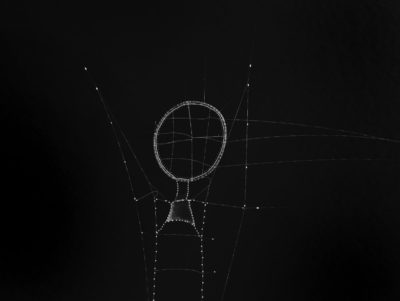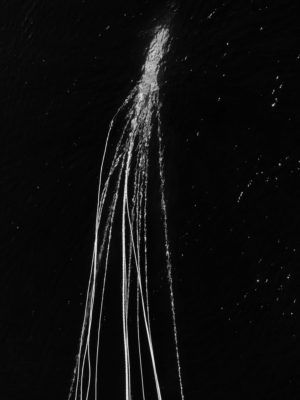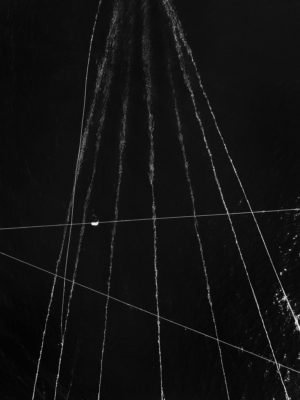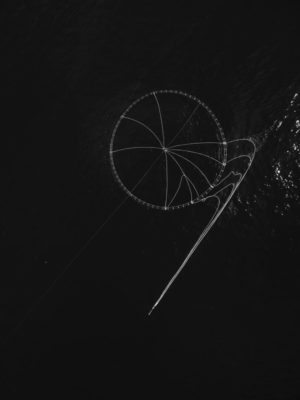Mare Omnis
From April 27, in the wonderful frame of the seventeenth century Palazzo Borghese in Rome in the two of the frescoed halls of the Galleria terrena, the Galleria del Cembalo will welcome visitors with the new exhibition Mare Omnis by Francesco Zizola.
The exhibition presents a selection of 22 of large format photographs that look like remote constellations, but actually are tuna fisherys, fishing gears in the open sea photographed by a drone: gears installed by the tonnarotti – those who take care of the slaughter – to catch the tuna in their migration towards the coast. The white points are buoys and the silver threads of the strips of water are the tops that secure the floating parts to the seabed.
The images have been taken in the south west region of Sardinia at the Tonnara di Portoscuso, which is in activity in that area since a very long time.
Mare Omnis anthropologically documents life being lived thanks to forms of local, sustainable and manual fishing, following centenary traditions, exploring through an articulated and complex visual language the relationship between man and nature and his influence on the seaworld. Building his own working tools, casting the nets, passing days and months waiting for the fishing season, being subject to the laws of nature: these actions form the knowledge and the heritage related to the proximity with the sea and a kind of life connected with it, nowadays substituted by industrial intensive fishing methods.
The images in the show strongly reveal the feeling of a symbiotic relation between man and nature as opposed to what happens in contemporary society: the sea water becomes an abstract landscape, fishes are caught in the dense fishing nets immersed in the deep blue.
The choice of black and white is meant to stimulate the imagination of the observer, leading to a sort of perceptive disorientation. The photographer deliberately finalizes a semantic deception to divert the senses by means of instinctive memory. This way the large tuna fisherys end up looking like different things: some see dream catchers in them, or ancient representations, or constellations. Therefore the series is called Constellation, for the strong similarity to the stars in the sky, while in some others since the first gaze Zizola sees the echoes of a work by Paul Klee, the Angelus Novus.
He says: “I find it more interesting to use photography to lead our perception and our mind to an imaginative and symbolic dimension, able to proceed by narrative metaphors. And the storytelling according to me is about the meaning of our being and of our action”.
As Barthes recalls: “Whatever it shows and in whichever way a photo is always invisible: it is not what you see”.
What are we really looking at when we see an image? What do our eyes recognize in front of it? This is what we ask ourselves while looking at the photographs of Mare Omnis. There is total ambiguity and Zizola chooses to reflect upon the photographic paradigm, knowing that images have the wonderful task of creating paths of meaning and giving rise to awareness processes in the viewer. “There is an ecstatic and poetic truth. It is mysterious and elusive and can only be achieved through imagination and stylization. Photography has the task of opening new possible understandings of the complexity of reality” comments the photographer on the process that led him to create these images.




Zero.eu
Phocus Magazine
Newsman Magazine
Arte Go
Innovarte
Periodico Daily
Seven News
Word News
GGlam
Arte.it
Lazio Eventi
Master Viaggi
Eco Italiano
Lifefactory Mag
Talk City
Agenparl
Controluce
Rivista La Gazzetta Online
La Gazzetta Online
GD Med
Politicamente Corretto
EZ Rome
Lulop
Oltre Le Colonne
Experiences

